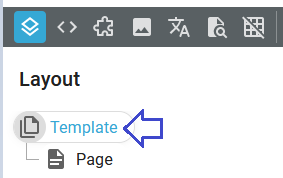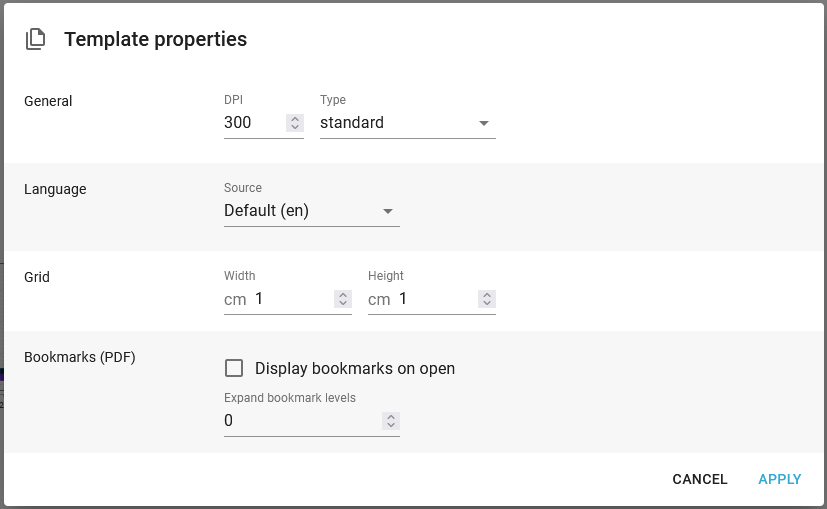When you create a new template, then the template is 'born' with some properties, that are copied from the template defaults of the tenant settings.
Other properties are set on the page element.
You can however change these settings for the template at any time. To do that you need to double-click the Template folder on the top left in the designer:

If you do, then you can change these settings:

The fields are:
DPI
The resolution (Dots Per Inch) to use for the barcodes, that are rendered in the result view of the designer, in the PDF result and in the PCL result. For label printing (ZPL and direct protocol) the resolution on the printer is used, so for label printing the barcodes may be a different size compared to the PDF/PCL result.
When you create a new template, then the DPI setting of the tenant settings is used, but you can of course change the value.
It is possible to overrule this setting for PDF output as described in the section: PDF resolution.
For emailing/HTML templates it is recommended to set the DPI to either 72 or 96 DPI.
Type
Defines if the template is a normal template an html email template or a transformation template (xslt).
Language
The language/locale, that will be used as default for any translation elements in the current template. The template is created with the default language set up as the template defaults.
The language also sets the default locale of any XPath functions, that has a locale parameter where this is not setup.
Grid
This is the size of the optional grid. The width and the height are the distances between the grid lines in the horizontal and vertical direction. If activated the grid is displayed and you can use the grid for aligning fixed positioned elements.
Bookmarks (PDF)
Relevant only for PDF output and only if you have defined at least one bookmark. With this paramters you can decide, if the bookmarks should be shown when the PDF is opened and also to which level the bookmarks should be expanded.
Validation
If this option is enabled then no job log warnings are added for any repeats in the template, that has no iterations.
Spooled files
If you want to process input spooled file, that are right to left orientated e.g. arabic, then you need to enable this option. These spooled files are handled in a different way, which requires a bit more processing, so that is why this is a special option.